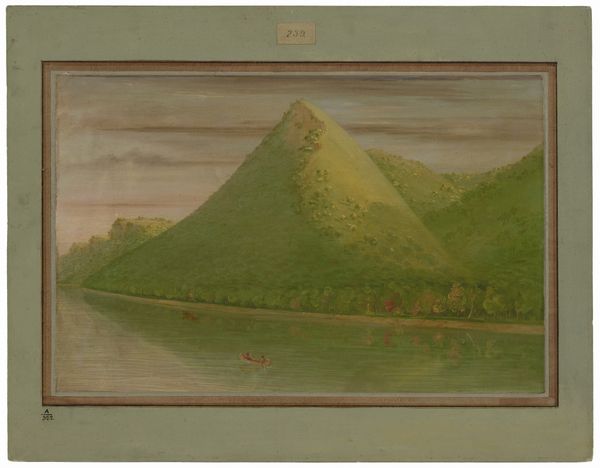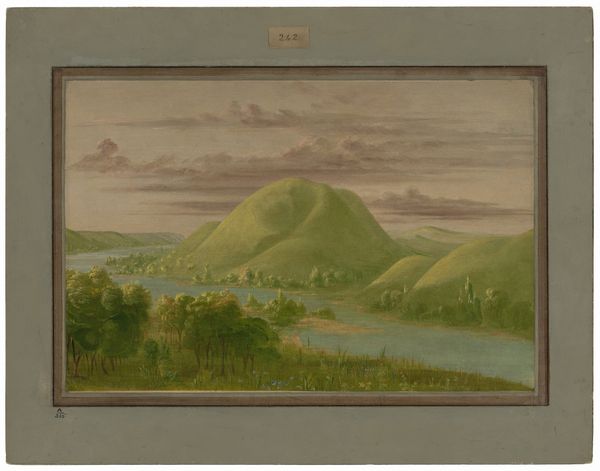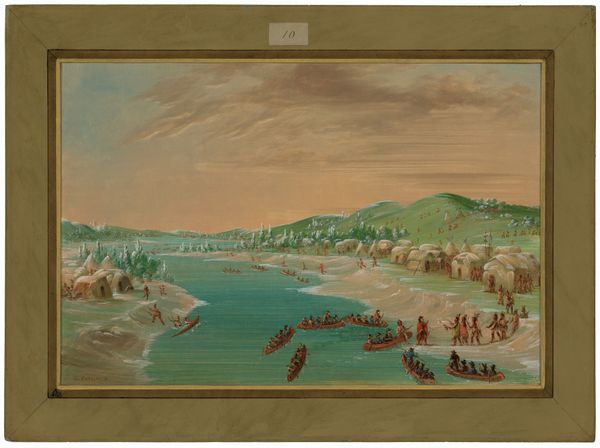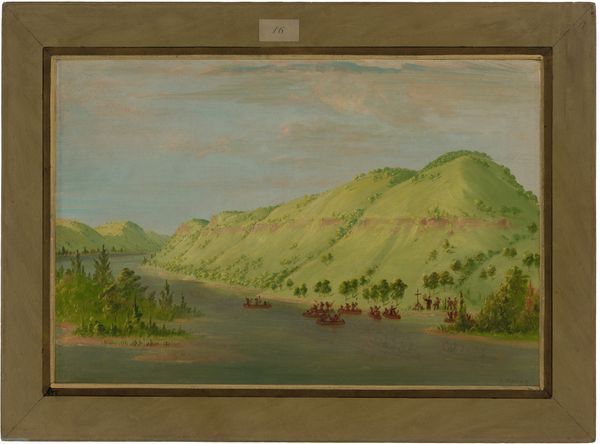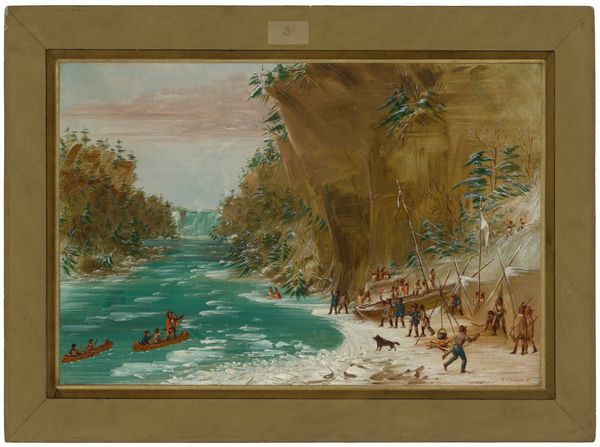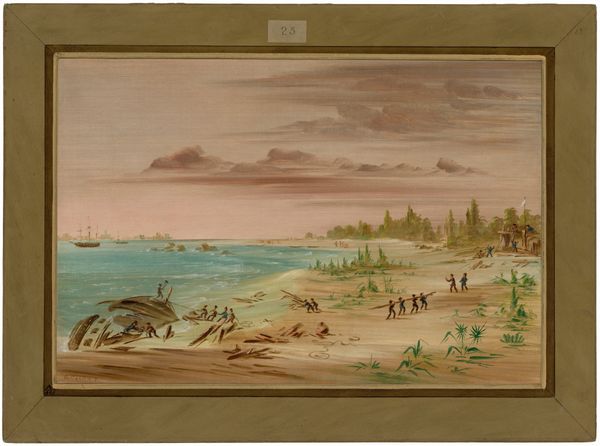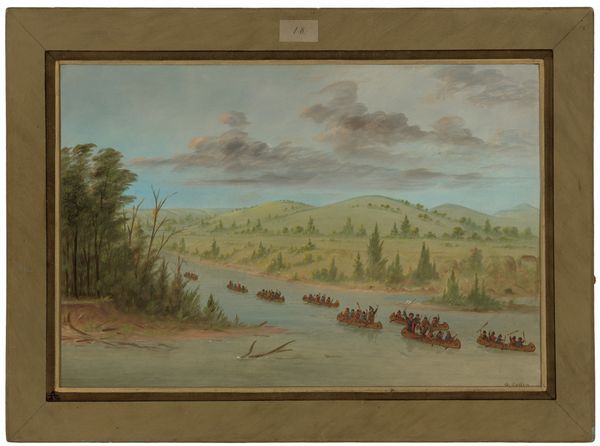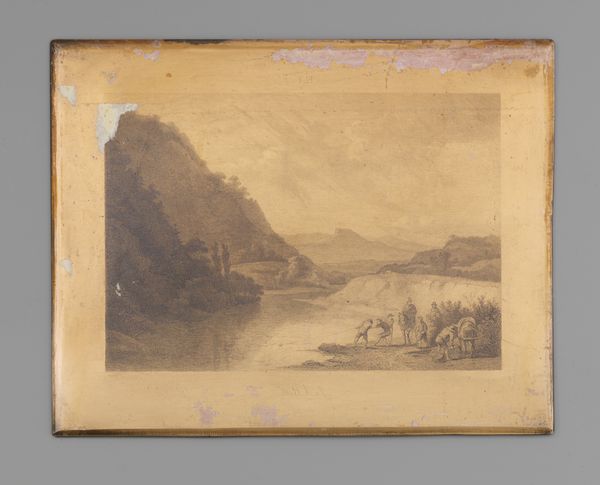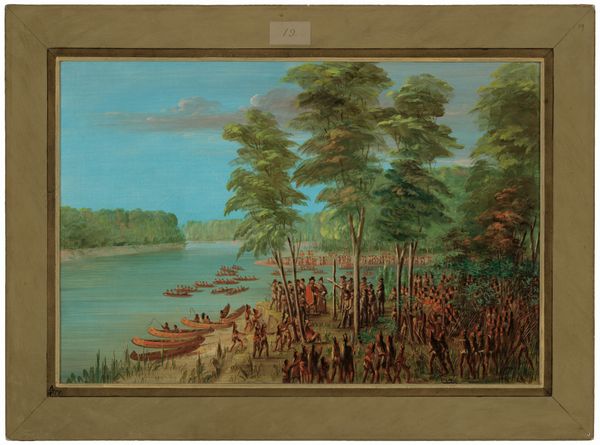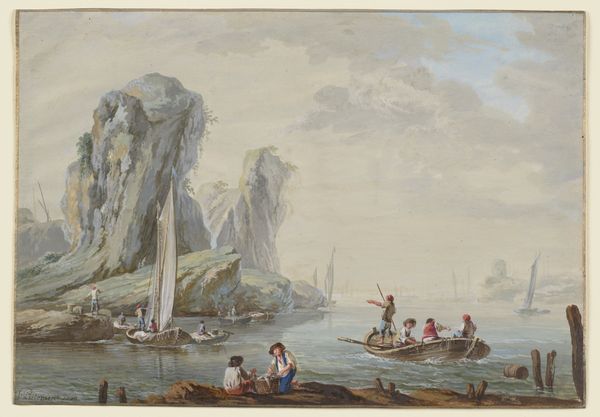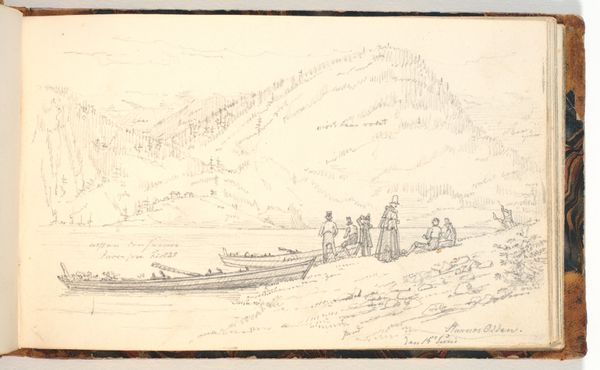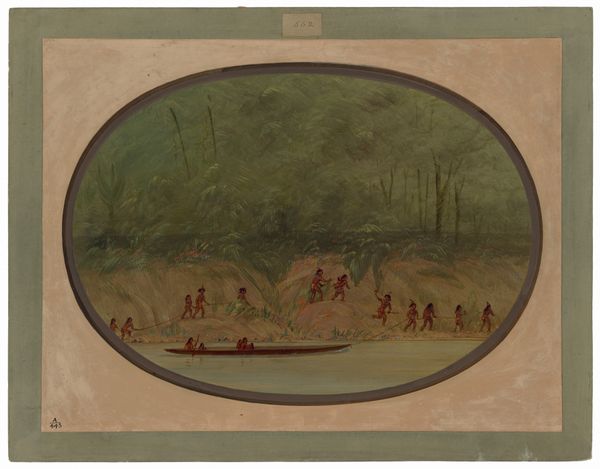
Father Hennepin and Two Companions Made Prisoners by the Sioux. April 1680 1847 - 1848
0:00
0:00
painting, gouache
#
water colours
#
narrative-art
#
painting
#
gouache
#
landscape
#
oil painting
#
indigenous-americas
Dimensions: overall: 42 x 60.5 cm (16 9/16 x 23 13/16 in.)
Copyright: National Gallery of Art: CC0 1.0
George Catlin painted "Father Hennepin and Two Companions Made Prisoners by the Sioux" sometime in the 19th century. Catlin's work is situated in the complex history of westward expansion and the romanticization, as well as the erasure, of Indigenous cultures. Here, Catlin depicts a scene of encounter and captivity. The painting portrays Father Hennepin, a European missionary, and his companions as prisoners of the Sioux, now known as the Dakota people. What does it mean to capture this moment? Is it a historical record or an imaginative reconstruction? Consider Catlin's role as an artist who aimed to document Native American life, but also participated in the colonial gaze. How might this perspective shape the narrative of the painting? What does it mean to depict this encounter from this perspective? Catlin's work invites us to reflect on the power dynamics inherent in representation, and to consider whose stories are being told, and from what point of view.
Comments
No comments
Be the first to comment and join the conversation on the ultimate creative platform.
